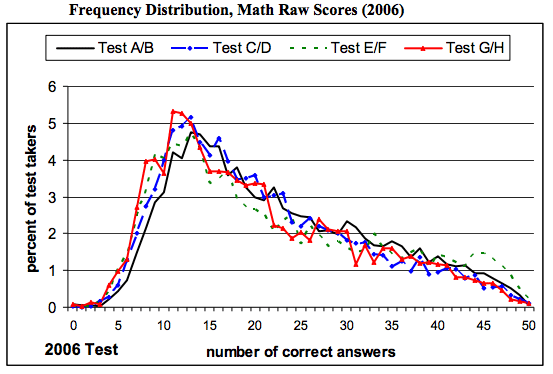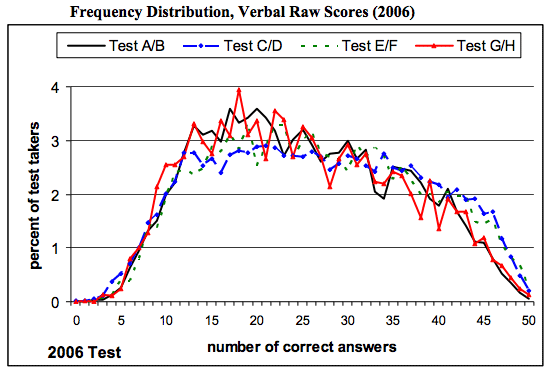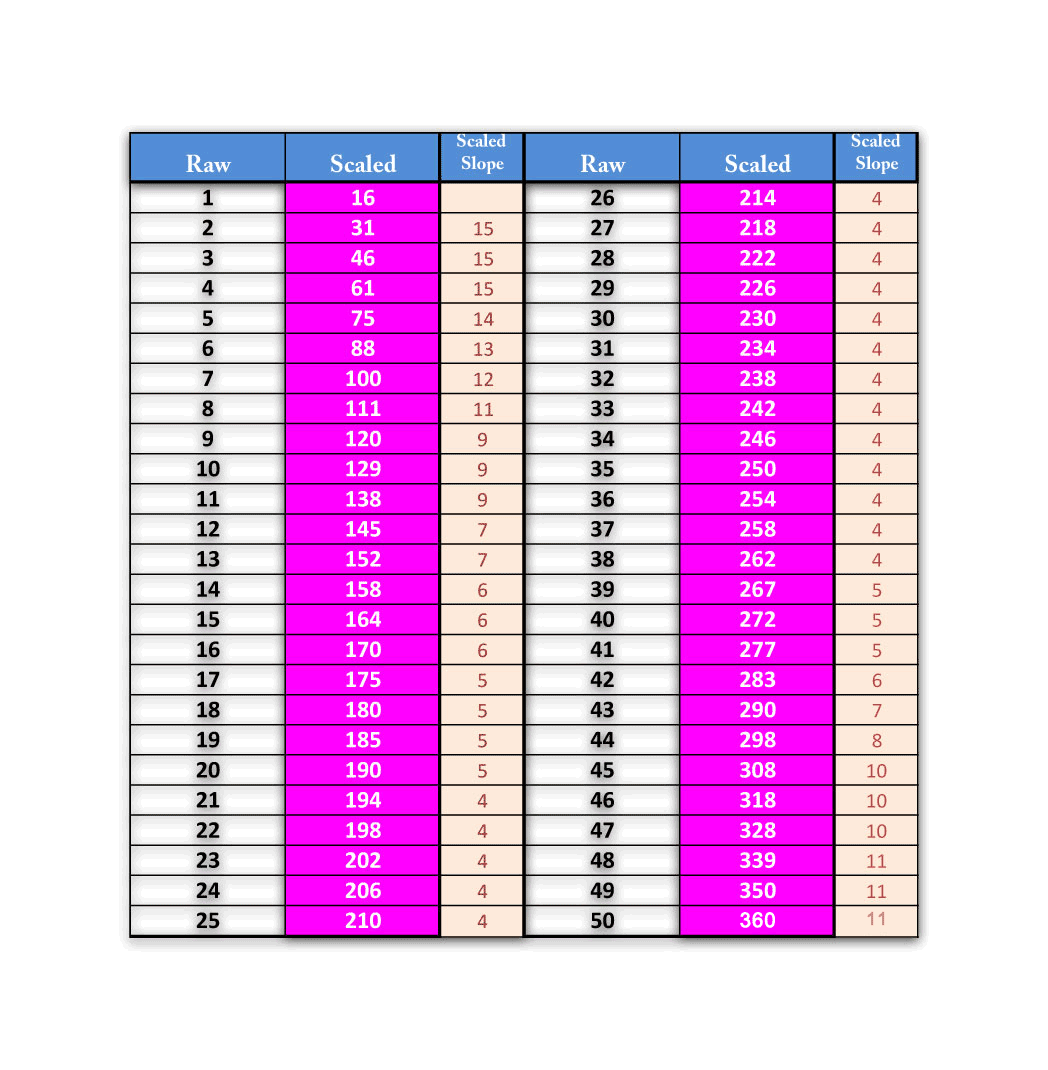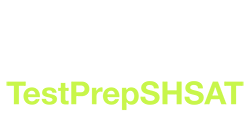Developing a successful strategy for the SHSAT or TJHSST exam is important. It serves as your roadmap to guide you and measure your progress toward getting a better score. Most every tutor and test preparation course will tell you they have “the winning strategy” and they will share it with you if you just share hundreds or thousands of your hard earned dollars with them. Unfortunately, I have found many do not even understand what drives a winning strategy. Instead, they perpetuate a series of SHSAT myths, lies, and non-truths because…well…it is good business. I don’t mean to knock tutors per se because they can be a great resource. I just want to provide another option and point out an alternative means of getting the same education without breaking the bank. My objective is to educate you about what might drive winning strategies for the SHSAT and in the process break one or two myths shared by most parents and students. After reading the following, you will probably know as much and likely more than many of your tutors about SHSAT strategy. Let’s begin by reviewing and understanding the scores.
Understanding the grading:
If you are considering taking the SHSAT or TJHSST exam you already know that there are two sections, math and verbal, and you have probably taken some sort of practice exam based on a raw score scale of 50 points out of 45(verbal) or 50(math) questions. If you have researched a little further you may have come across cut-off scores by specialized high school and a conversion from your practice raw score to a scaled score which is the only score that determines admission into specialized high schools. That information is available to you on the right.
The first thing that might jump out at you from the above information is that an average raw score of about 42 out of 50 is required on each section of the exam for a total of 84 out of 100 to get accepted into Stuyvesant. That raw score cut-off number ranges in a tight band between 33-37 (66-74 on math & verbal combined) for the other specialized high schools in order to gain admission. The cut-off scores are remarkably stable, but then that shouldn’t be surprising unless the schools changed dramatically or you suspect the pool of nearly 30,000 kids in one year are substantially smarter or different than in any other year. This is a great starting point for your strategy. You have defined the level of the bar you need to hurdle and you can begin to plan around it based on your choice of school.
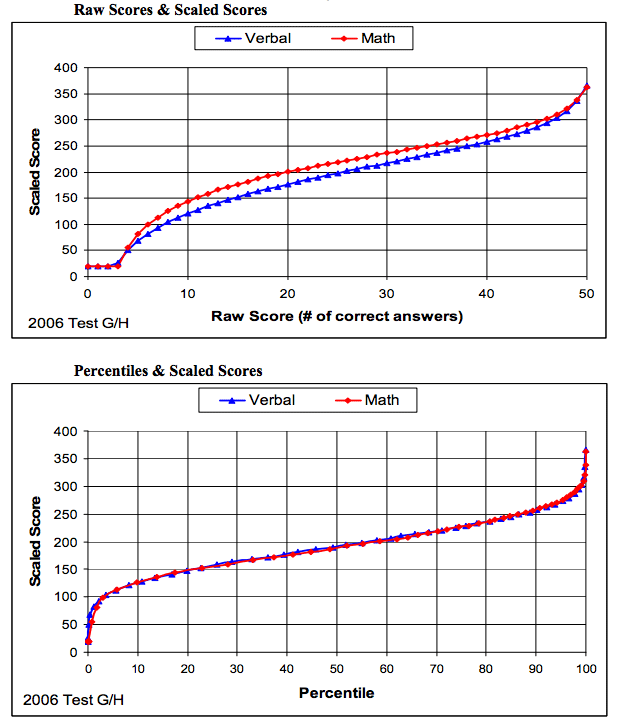
I should point out the conversion scales you come across are estimates only, but they are fairly close when compared to the conversion chart from actual 2006 SHSAT test data used in a University of Colorado study. The exact conversion is proprietary to the NYC DOE and it can depend on many variables that change question by question. That said, there are some powerful implications from the general shape of the curve even if some of the exact data points differ. Furthermore, the total score is used for admission, but that total is composed of two separately scored math and verbal tests and that makes a big difference to strategy implications. As a result, there is a lot more to learn.
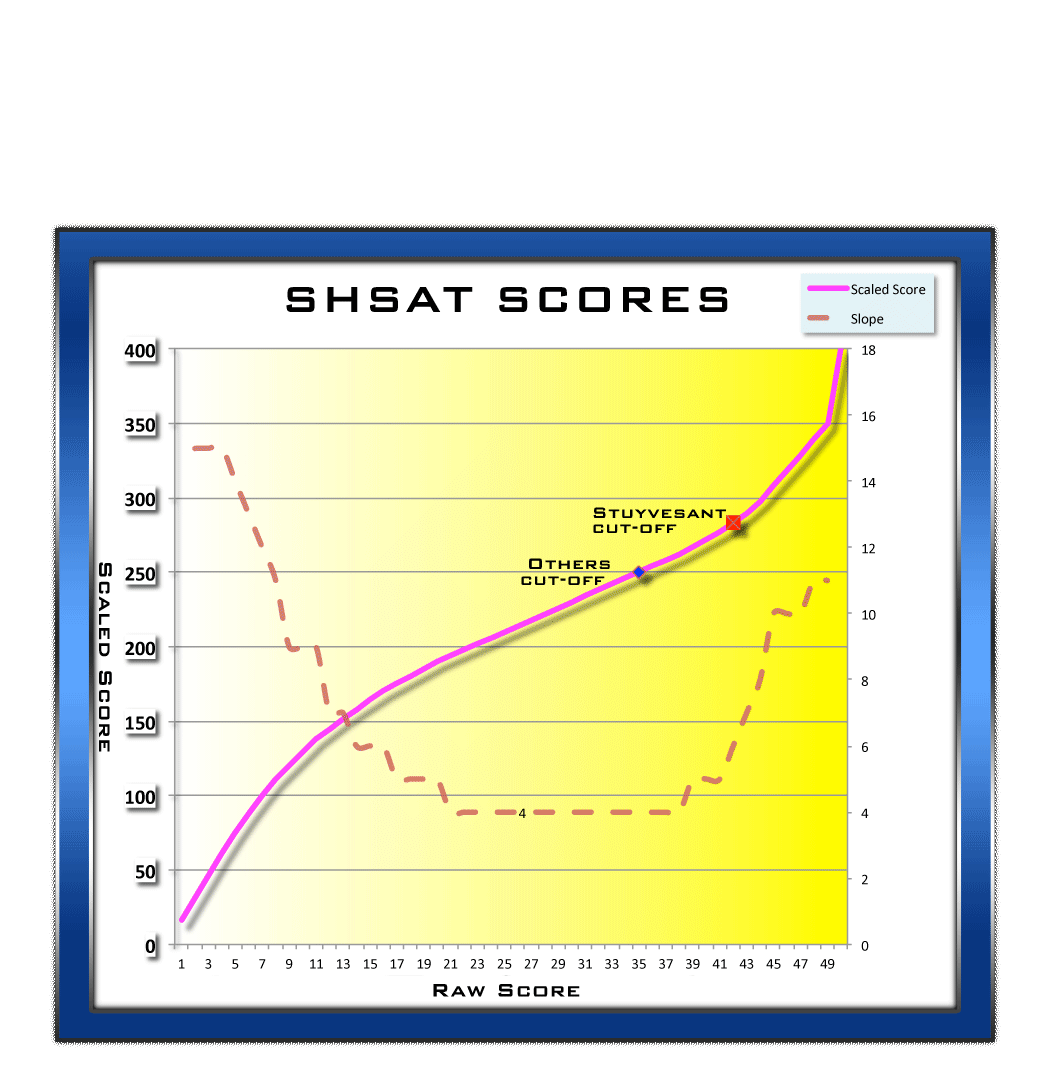
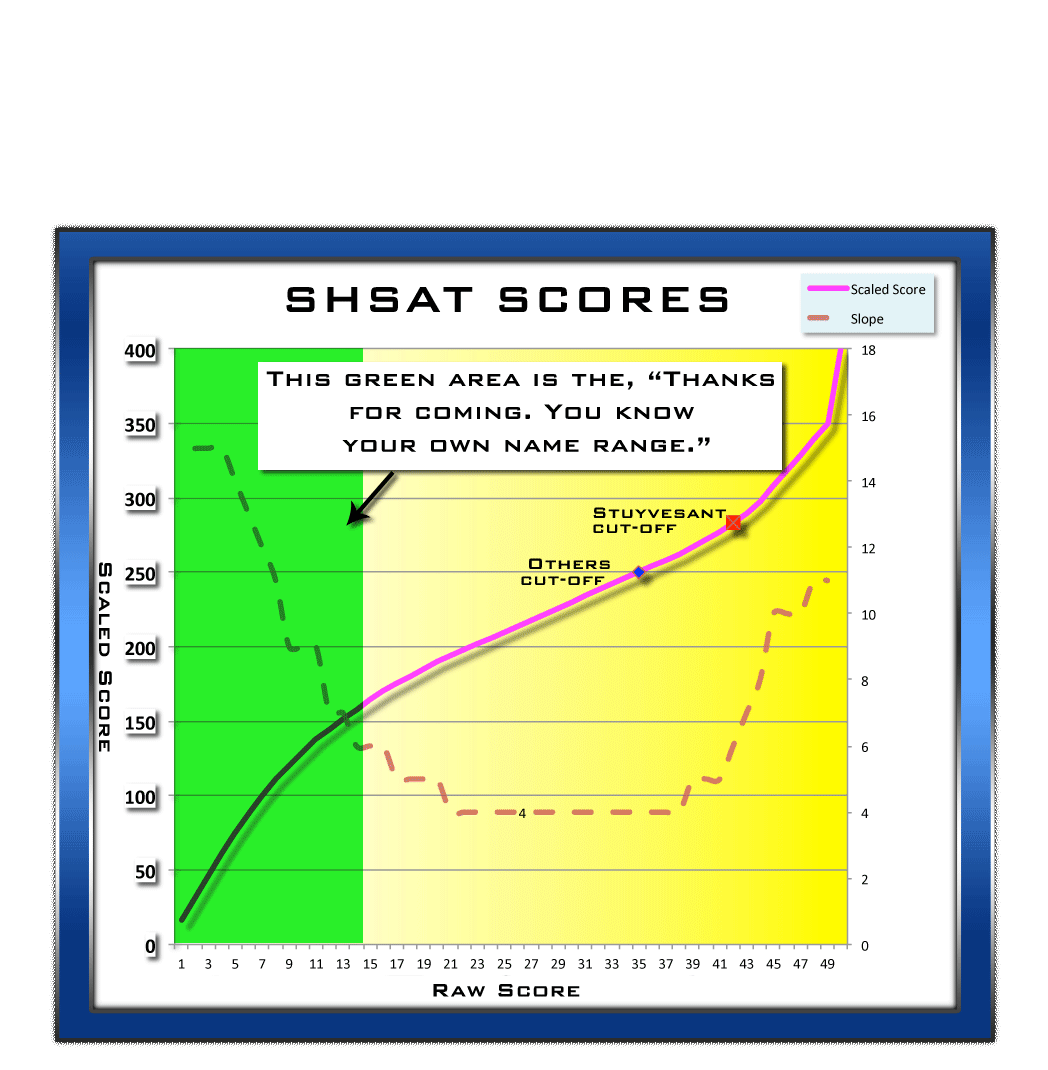
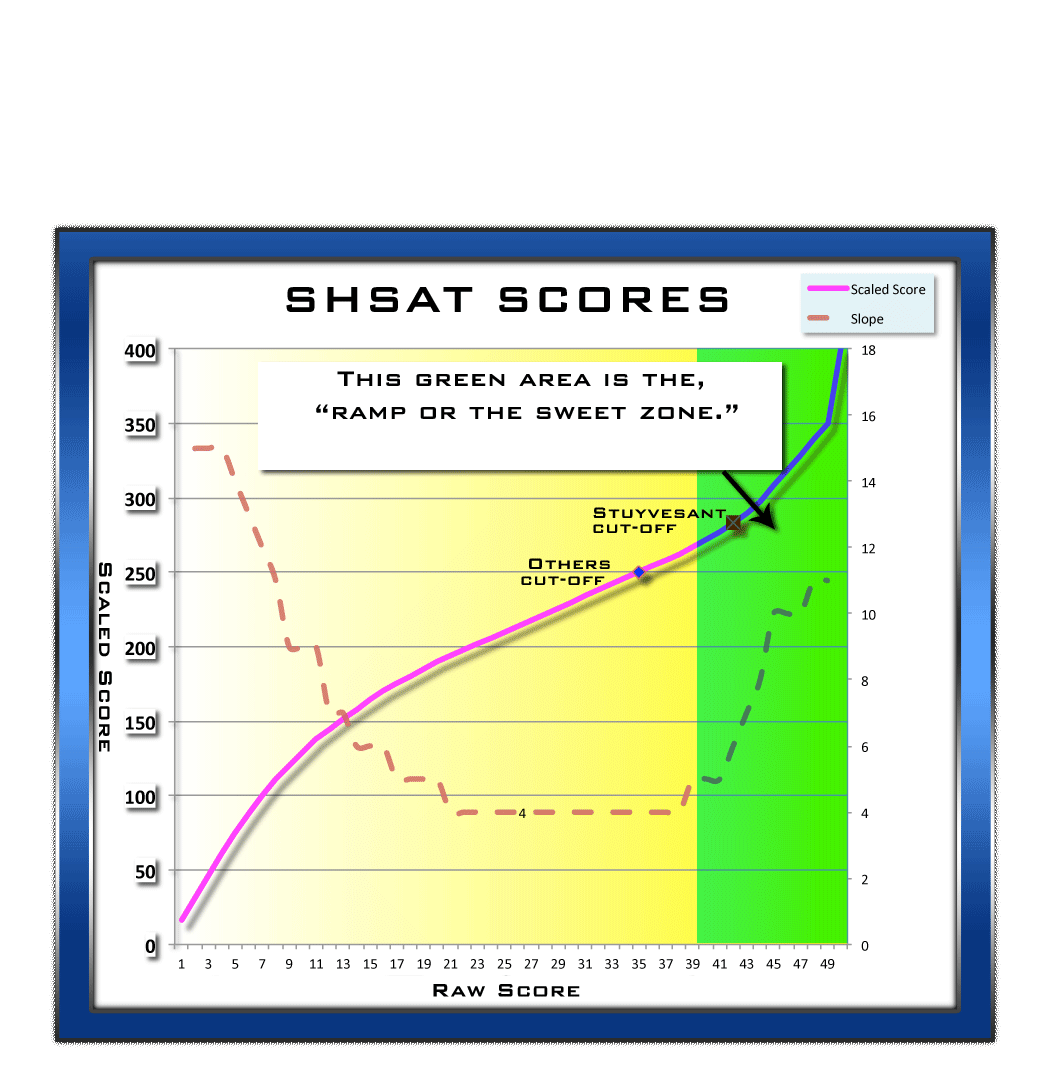
Raw scores increase in a linear fashion, one point for every one correct answer (Scrambled Paragraphs two for one). The scaled scores, however, do not change in a linear fashion and that is extremely important. The scaled score ramps up very quickly to around 150 for each test from just answering the first few questions correctly. Most every kid will do at least that much and I liken it to getting a couple hundred points on the SAT for writing down your name. There probably aren’t many total SHSAT scores below a couple hundred.
The scaled scores then enter a middle range which almost certainly accounts for the vast majority of students’ results. This range behaves in a linear fashion like your own raw scores. As the dashed line indicates it is where you gain the least amount of points for each correct answer which means scores are somewhat compressed in this range. At the top end of this middle range are the cut-off points for admission to specialized high schools. Because this is what we are interested in and because the admission points lie just on the edge of the ramp up again in scaled scores, there are some very important additional things to conclude for our strategy.
Above a raw score of just more than 40 the extra points earned from getting one additional question correct quickly ramps up again. As the dotted line indicates, the scaled score gained from a correct answer in this range can be 10 or more points or typically about double the value of getting a correct answer in the score range between 15 and 40.
From a strategy perspective, that means a student who can get a score materially above 40 on one or other of the math or verbal test can really get a leg up on the rest of the competition. For example, Student 1 may get a raw score of 41 on both math and verbal exams and he/she will likely just miss gaining admission to Stuyvesant. Student 2, however, who gets 46 on the math and 36 on the verbal for the same raw average of 41 will gain admission because her scaled score exceeds the Stuyvesant cut-off score. In essence, if a student is targeting a scaled score (and they are by definition) then every question correct above 40 on one test affords the student leeway to miss two questions on the other test. Returning to our example, if the prospective Stuyvesant student gets a 47 raw score on the math exam which is +5 questions correct or 5 raw points above the Stuyvesant cut-off average of 42 then they can afford to get only 32 questions correct on the verbal. That is room for 10 more questions wrong or -10 raw points relative to the 42 raw score cut-off. The scaled math score of 328 corresponding to 47 questions correct will be added to the verbal score of 238 corresponding to 32 questions correct for a total scaled score of 566, good enough to get into Stuyvesant each of the last three years! This is true because two tests are scored separately on this curve even though only a total score matters for admission and the scaled score of getting 5 extra questions correct in the 40s is worth the same as missing 10 questions on the other test.
Well that would be great if only I could get a score in the 40s on one exam or the other! I know. It is a challenging goal for most, but nobody said it would ever be easy. You’ll have to if you have any plans to go to Stuyvesant and you may want to come within spitting distance for any of the other specialized high schools. That much was clear from seeing the cut-off scores in the beginning. The important take-away from this part of the analysis is that taking time to focus and get really good on one test or the other is better than being kind of good at both. This conclusion is also borne out in a study on the SHSAT by the University of Colorado which states, “Someone with a very high score in one section of the test and a relatively poor one in the other will have a better chance of admission than someone with relatively strong performances in both.”
So which do I focus on? Math or verbal?
Once again, let’s look at the data. Although both tests have similar average raw scores, it is hard not to notice that there is a large peak of NYC students performing worse at math than verbal. Anecdotal evidence suggesting factors like many schools do not teach algebra until after the SHSAT exam in the spring of 8th grade may go a long way toward explaining this peak. It is hard to say for certain without more evidence, but that might be a focus issue I would investigate if I were running NYC schools. Clearly too many good students in NYC are not up to required levels of math for the specialized high schools. It is somewhat alarming, but not our focus here which is to discuss strategies for gaining entrance into the specialized high schools and that means looking at ways to get SHSAT scores above the cut-off. That requires focusing on the high end of the curves at raw scores in the 30s and above. It seems about as many students score above 40 on verbal as on math. At first blush, this suggests there is little difference overall between math and verbal. I might be inclined to say whichever test is your area of strength. Focus on that.
Previously, we discussed strategy related to scrambled paragraphs and how that may change your approach from above, but that is no longer relevant as scrambled paragraphs are no longer included in the SHSAT exam as of calendar year 2017. See the following note.
The city’s Panel for Educational Policy approved a change in format for the 2017 calendar year SHSAT on September 21, 2016. The scrambled paragraph section will be replaced by multiple choice reading comprehension questions.
What are your thoughts?
We think this move is understandable. While we think the topics of scrambled paragraphs are interesting and valuable in their own right, the exercise itself leads to more uncertainty and stress for many students and it is certainly not something taught in the schools. The impact on diversity will probably be minimal, but we have not seen evidence one way or another. The fact that scrambled paragraphs are generally taught in tutoring courses outside school and African Americans and Latinos are underrepresented in typical tutoring programs could be of some benefit, but again we know of no study that shows these demographics underperform more severely on this section (although we may have some data worth investigating on the matter). The panel did indicate the difficulty and grading of other sections and the overall exam will not change. We see no reason to doubt that. A few new types of “field testing” only questions will be added.
The question that this will lead to greater bunching of scores is unfounded and the wrong question in our opinion. We believe scrambled paragraphs are the least reliable section for students to differentiate themselves based on skill. Furthermore, few people understand that the bunching issue already exists and it is already significant. Let me explain. Approximately half the students who get admitted (roughly speaking students from 2,501-5,000) are statistically no different within the exam’s margin for error than the next 2,500 (students from 5,001 to 7.500) who did not get admitted and just missed the cut-off. In other words, if the exam were taken a different day, it is likely many who were in the lower half of scores above the lowest cut-off would not get admitted and those who just missed the cut-off would score a little better and get admitted. Those figures are already substantial and we doubt the elimination of scrambled paragraphs will change the basic picture.
